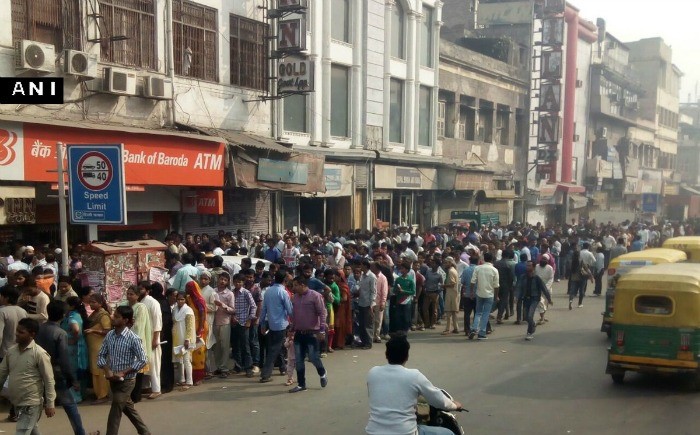 In many parts of the state, conflicts involving immigrants from other regions are increasingly surfacing. What often begins as minor disputes has, in some cases, escalated into violent confrontations, resulting in incidents of murder, looting, and organised criminal activities. These developments have raised concerns about security and the government’s preparedness to address the situation.
In many parts of the state, conflicts involving immigrants from other regions are increasingly surfacing. What often begins as minor disputes has, in some cases, escalated into violent confrontations, resulting in incidents of murder, looting, and organised criminal activities. These developments have raised concerns about security and the government’s preparedness to address the situation.
According to police data, over 170 cases of violent altercations linked to migrant groups have been registered in the past nine months, marking a 20% increase from the 142 cases reported during the same period last year. Of these, 38 cases involve murder or attempted murder, compared to 28 cases last year, while more than 70 incidents of looting and robbery have been reported, up from 55 incidents in 2024. Residents say these figures only represent a fraction of what is actually taking place, as many incidents go unreported due to fear of reprisals.
One recent case in Ludhiana involved a violent clash between two groups of workers from different states, which left three people dead and more than a dozen injured. In another incident in Jalandhar, a series of house break-ins was traced to a gang formed primarily by newly arrived migrants, leading to the arrest of eight suspects. Similar reports of street fights, theft, and extortion have emerged from smaller towns as well, pointing to a broader trend rather than isolated events.
Police officials, however, maintain that the situation is “under control.” Speaking to reporters, Inspector General (IG) of Police, Ludhiana Range, R.P. Singh said, “We are closely monitoring areas with a high concentration of migrant workers. Additional patrols have been deployed and several criminal gangs have already been busted. Law-abiding migrants need not fear; our action is strictly against those involved in unlawful activities.”
The state government has also addressed concerns over the rising incidents. Home Department spokesperson Anil Sharma stated, “While there is a slight increase in reported cases compared to last year, migration is a long-standing feature of our economy. The government is committed to public safety and the protection of migrant workers’ rights. We are actively coordinating with local administrations to prevent clashes.”
Community leaders, however, feel more proactive measures are needed. “People are scared. They want assurances that violence and crime will be curbed, not just statements,” said Harbhajan Singh, a panchayat head from Bathinda. Many residents argue that routine police action is not enough and demand stricter regulation of migrant settlements and better verification systems.
Experts on social conflict note that rapid, unregulated migration often creates competition over jobs, housing, and resources, which can fuel resentment and clashes. They recommend stronger monitoring of incoming labor, community integration programs, and cooperation between local administrations to reduce tensions.
Rights activists have also cautioned against labeling migrants as a problem. “It is important to remember that thousands of workers migrate every year to support their families,” said activist Neha Kapoor. “They contribute to industries such as construction, agriculture, and manufacturing. The criminal acts of a few individuals should not lead to stigmatization of the entire community.”
District-wise Crime Trends
In Ludhiana, the number of violent incidents linked to migrant groups has jumped from 45 cases in 2024 to 58 cases in 2025, marking an increase of nearly 29%. Residents report that clashes between different groups of workers have become more frequent, with some disputes turning deadly.
Jalandhar has also seen a significant rise in such cases, with 38 reported incidents this year compared to 30 last year, an increase of around 27%. Local authorities note that thefts and street fights are the most common issues, often fueled by disagreements over living and working conditions.
Bathinda follows a similar trend, recording 32 cases in 2025, up from 25 in 2024, representing a 28% increase. Community leaders here have expressed concerns about repeated conflicts in certain neighborhoods, calling for better monitoring and preventive measures.
Amritsar, while witnessing a smaller increase, saw cases rise from 20 to 22, reflecting a 10% uptick. Though less severe than in Ludhiana and Bathinda, authorities have urged residents to remain vigilant and cooperate with law enforcement.
Interestingly, Patiala reported a slight decline, with 20 cases this year compared to 22 last year, showing a 9% decrease. Officials attribute this drop to focused policing and community outreach programs that aim to reduce tensions before they escalate.
Overall, the trend indicates a clear upward trajectory in most key districts, highlighting the need for comprehensive measures to manage migration-related c